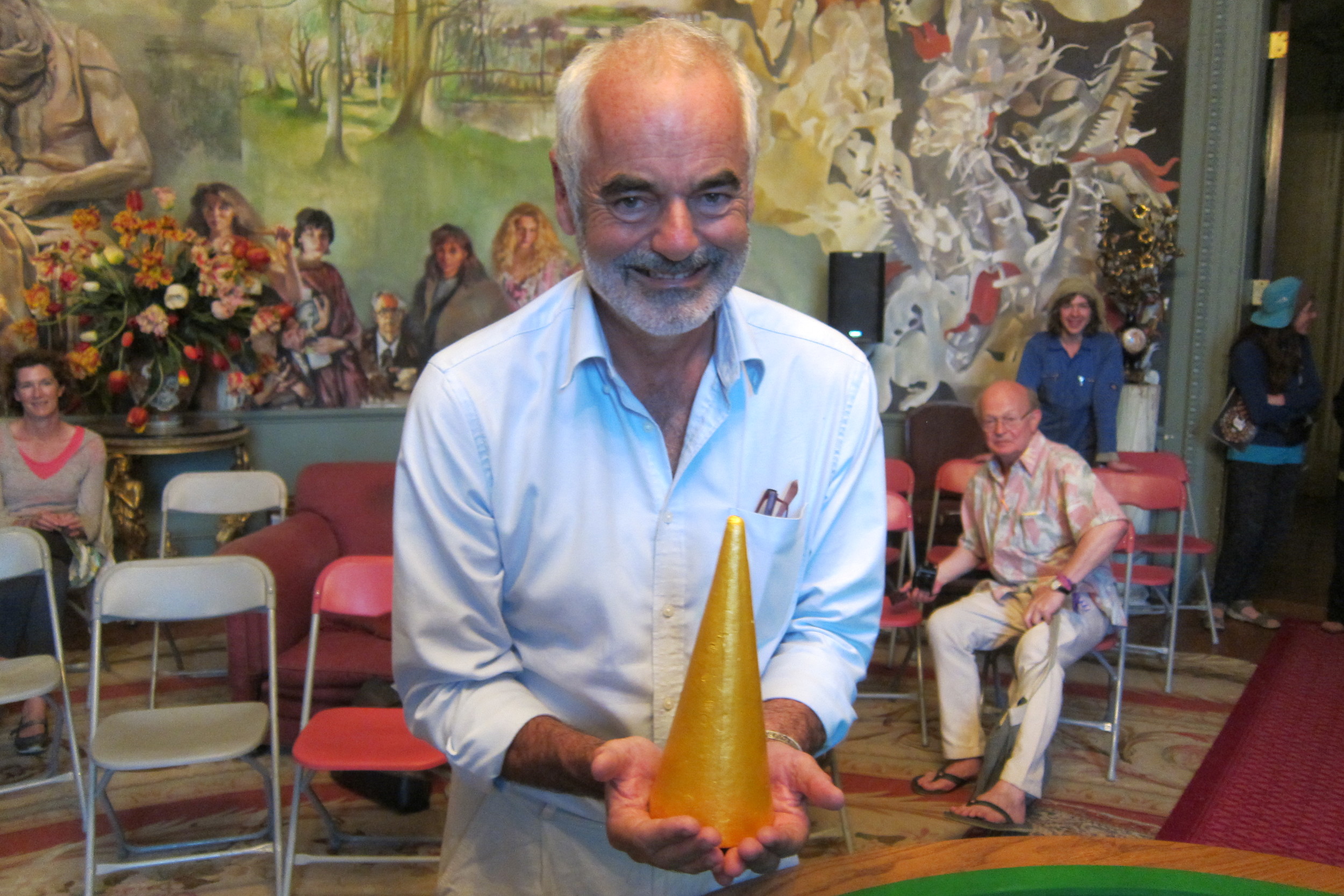The tournament was held in the Round Room at Port Eliot, Cornwall, on July 31 and August 1, 2015. The room, designed in 1804 by Sir John Soane, is one of the architectural highlights of Port Eliot. British artist Robert Lenkiewicz spent 30 years on and off painting the mural and it is considered his masterpiece. With so much British architectural and artistic heritage in the room it seemed the perfect venue to make sporting history with the launch of LOOP. The pocket was positioned directly underneath the centre of the chandelier. Picture: Michael Bowles.
I introduced the table with a short explanation of the ellipse from Apollonius to today, demonstrating the unique geometry of LOOP and setting out the rules. Many in the audience were grateful that in addition to seeing the launch of a new sport they were given a maths lesson too. Picture: Alex Bellos.
The first match was between Fred Wobus (in the top picture) and Mat Connolley (this picture). Six other people took part in a knock-out tournament on the first day: Mark Davey, Paul Illingsworth, Simon Bray, Quin Kirwan, Alex Demaunay and Simon Burr. Simon Burr defeated Fred in the final, making him Day 1 champion and winning him a place in the play-off for the world title. Picture: Michael Bowles.
Eight more contestants took part on the second day: David Spiegelhalter (above), Gavin Pretor-Pinney, Lucy Cooke, Jamie Brisick, Ali Macloed, Paul Kirkby, Girma Tadele and Barney Shepherd. Spiegelhalter won the knock-out and played Simon Burr in the grand final. Picture: Alex Bellos.
David Spiegelhalter, Winton Professor of the Public Understanding of Risk at Cambridge University, has an OBE and is a Fellow of the Royal Society. His most recent, and possibly most cherished laurel, however, is the LOOP world title. Spiegelhalter skilfully defeated Burr in the grand final to gasps and cheers from the audience. Here he is with the world championship trophy, the Golden Cone. Picture: Alex Bellos.


















